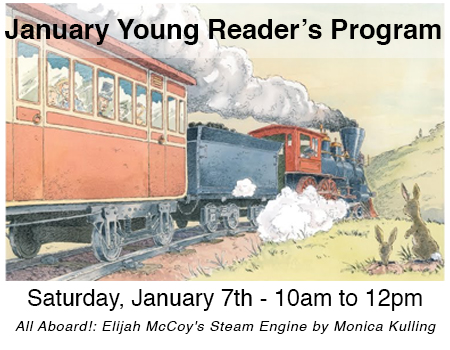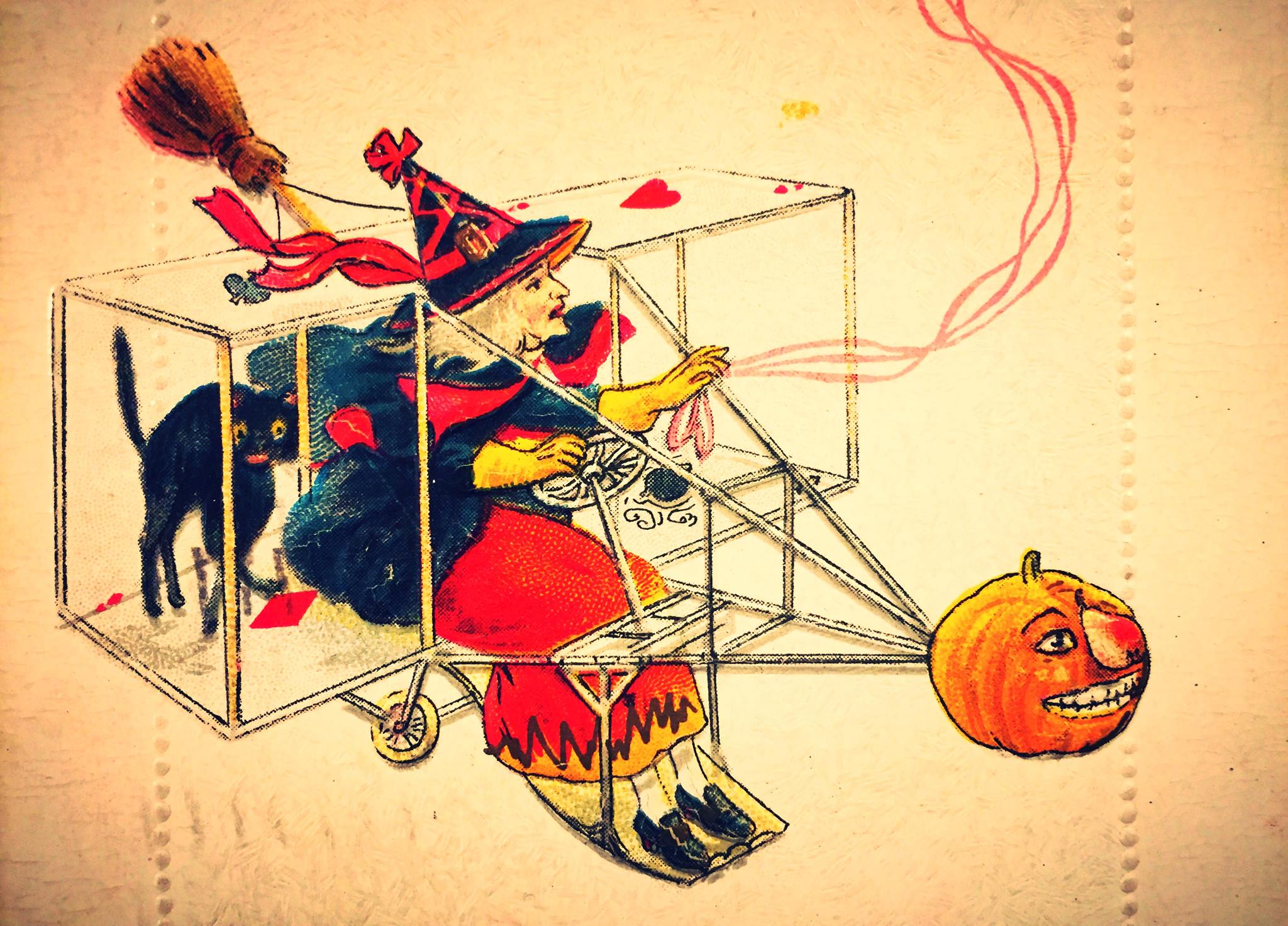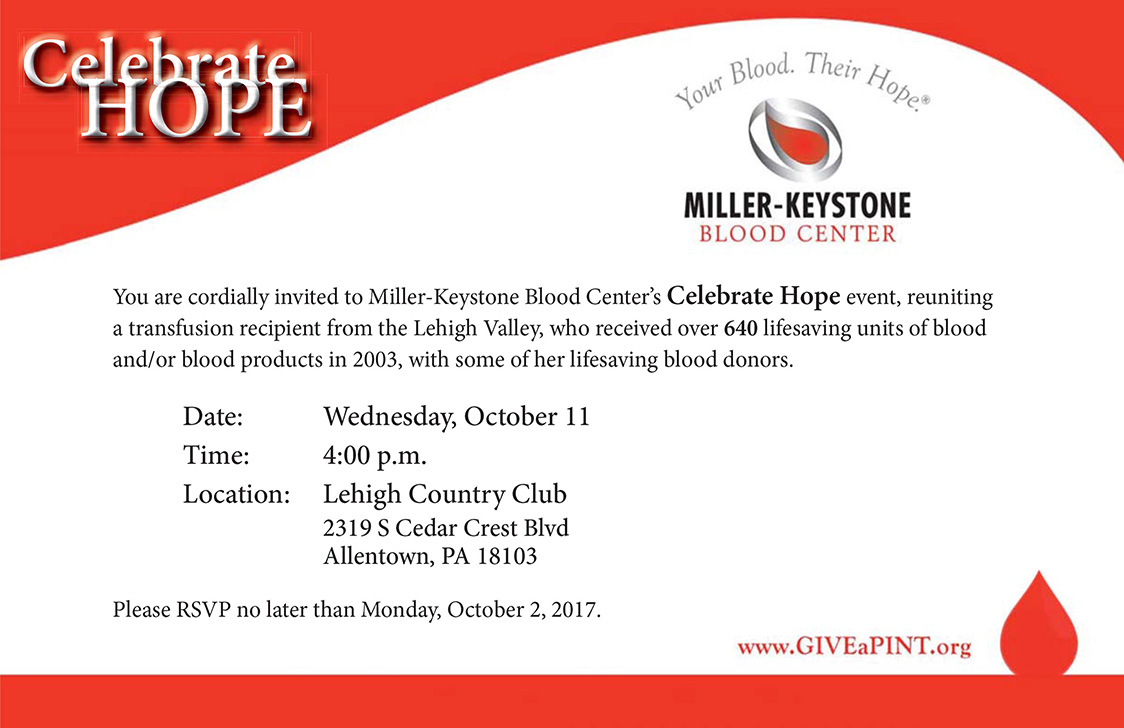 The National Museum of Industrial History starts the New Year by announcing its brand new Young Reader’s Program. This engaging series features award-winning children’s literature to educate and inspire younger generations with stories of industrial history. Each date will include a fun and interactive show and tell component that will be fun for the whole family. “I’m really excited not only to share the stories of inventors and inventions but the artifacts that bring those stories to life,” said Kitsa Behringer, the museum’s Educational Coordinator.
The National Museum of Industrial History starts the New Year by announcing its brand new Young Reader’s Program. This engaging series features award-winning children’s literature to educate and inspire younger generations with stories of industrial history. Each date will include a fun and interactive show and tell component that will be fun for the whole family. “I’m really excited not only to share the stories of inventors and inventions but the artifacts that bring those stories to life,” said Kitsa Behringer, the museum’s Educational Coordinator.
The program kicks off this Saturday, January 7th with a special collaboration with the LV Cops ‘n’ Kids program and a reading of Monica Kulling’s “All Aboard!: Elijah McCoy’s Steam Engine.” Following the book reading children and their families are invited to stick around for a special Show & Tell with artifacts from the Lehigh Valley Railroad.
Support for this program was generously provided by QNB Bank.
January 7, 10am to 12pm (In partnership with LV Cops and Kids)
All Aboard!: Elijah McCoy’s Steam Engine
by Monica Kulling
Join the National Museum of Industrial History and learn about “the real McCoy”. The son of a former slave, Elijah McCoy, was fascinated with machines and became an inventor who improved the rail industry. Meet our Education Coordinator as she reads All Aboard!: Elijah McCoy’s Steam Engine and stay a bit longer for a show-and-tell of artifacts from the Lehigh Valley Railroad.
February 11, 10am to 11am
Molly, by Golly
by Dianne Ochiltree
This legendary tale introduces young readers to Molly Williams, an African American cook for New York City’s Fire Company 11, who is considered to be the first known female firefighter in U.S. history. One winter day in 1818, when many of the firefighting volunteers are sick with influenza and a small wooden house is ablaze, Molly jumps into action and helps stop the blaze, proudly earning the nickname Volunteer Number 11. Relying on historic records and pictures and working closely with firefighting experts, Dianne Ochiltree and artist Kathleen Kemly not only bring this spunky and little-known heroine to life but also show how fires were fought in early America.
March 11, 10am to 11am
Going Up!: Elisha Otis’s Trip to the Top
by Monica Kulling
In 1818, seven-year-old Elisha was fascinated by farm machinery. As a young man, he tried a variety of ways to make a living, but nothing fired his imagination more than the job he found in a bed-frame factory. Soon he invented a machine that made frames four times faster than ever before. In 1852, while overseeing the construction of a new factory, he had to find a way to move heavy machinery to the second floor. He didn’t trust the hoisting platform, so he invented a safety brake. It was so successful that rather than lift machine parts, Elisha decided to build “people-hoisting machines.” In 1857, Elisha Otis installed his first successful passenger elevator in a five-story department store in New York City. Before Elisha’s invention, buildings were never higher than six stories. At last it was possible to build skyscrapers!
April 8, 10am to 11am
It’s a Snap!: George Eastman’s First Photograph
by Monica Kulling
George Eastman had a new hobby: photography. The year was 1877, and photography was not as easy as you might think. It cost a lot and the equipment was bulky, but George was about to change all that. What he lacked in formal education, George more than made up for in ingenuity: he invented dry plates, film, and the Brownie camera! The rest is history.
For anyone who has ever taken a picture or posed for one, It’s a Snap! George Eastman’s First Photograph, with its playful, informative text and lively illustrations, is a splendid introduction to biography, to photography, and to the amazing man who had so much to do with putting picture-taking within reach of us all.
May 13, 10am to 11am
In the Bag!: Margaret Knight Wraps It Up
by Monica Kulling
Tundra’s Great Idea Series is comprised of biographies of inventors for early readers. The third book in the series introduces the fascinating Margaret Knight. Known as Mattie, she was different from most American girls living in 1850. She loved to make things with wood and made the best kites and sleds in town. Her father died when she was only three, and by the time she was twelve, she was working at the local cotton mill alongside her two older brothers. One day, she saw a worker get injured by a shuttle that had come loose from the giant loom, and the accident inspired her to invent a stop-motion device. It was the first of her many inventions.
Margaret Knight devoted her life to inventing, and is best known for the clever, practical, paper bag. When she died in 1914, she had ninety inventions to her name and over twenty patents, astounding accomplishments for a woman of her day. Monica Kulling’s easy-to-read text, peppered with lots of dialogue, brings an amazing, inspiring woman to life.
June 10, 10am to 11am
Spic-and-Span!: Lillian Gilbreth’s Wonder Kitchen
by Monica Kulling, David Parkins
Born into a life of privilege in 1878, Lillian Moller Gilbreth put her pampered life aside for one of adventure and challenge. She and her husband, Frank, became efficiency experts by studying the actions of factory workers. They ran their home efficiently, too. When Frank suddenly died, Lillian was left to her own devices to raise their eleven children. Eventually, she was hired by the Brooklyn Borough Gas Company to improve kitchen design, which was only the beginning.
Lillian Gilbreth was the subject of two movies (Cheaper by the Dozen and Belles on Their Toes), the first woman elected to the National Academy of Engineering, and the first female psychologist to have a U.S. postage stamp issued in her honor. A leading efficiency expert, she was also an industrial engineer, a psychologist, an author, a professor and an inventor.
July 8, 10am to 11am
Rosie Revere, Engineer
by Andrea Beaty, David Roberts
Rosie may seem quiet during the day, but at night she’s a brilliant inventor of gizmos and gadgets who dreams of becoming a great engineer. When her great-great-aunt Rose (Rosie the Riveter) comes for a visit and mentions her one unfinished goal–to fly–Rosie sets to work building a contraption to make her aunt’s dream come true. But when her contraption doesn’t fl y but rather hovers for a moment and then crashes, Rosie deems the invention a failure. On the contrary, Aunt Rose inisists that Rosie’s contraption was a raging success. You can only truly fail, she explains, if you quit.
August 12, 10am to 11am
Zap! Nikola Tesla Takes Charge
by Monica Kulling (Author), Bill Slavin (Illustrator)
Growing up in Smiljan, Croatia, Nikola Tesla dreamed about harnessing the power of Niagara Falls. In 1884, he walked down the gangplank into the New York Harbor with four cents in his pocket, a book of poems, a drawing of a flying machine, and a letter of introduction to Thomas Edison, the “electrical wizard” of America. Upon meeting, Edison sent Tesla to fix the SS Oregon as a test and was so astounded that he offered Tesla a job at his factory.
Tesla and Edison had different views about electricity; Tesla wanted to develop an alternate current while Edison wanted to stick to the direct current system. Edison offered Tesla a large sum to make his direct current system more efficient, but when the work was done, Edison refused to pay. Tesla quit and when things were looking bleak, he met George Westinghouse, who also thought that alternating current
September 9, 10am to 11am
On a Beam of Light: A Story of Albert Einstein
by Jennifer Berne
A boy rides a bicycle down a dusty road. But in his mind, he envisions himself traveling at a speed beyond imagining, on a beam of light. This brilliant mind will one day offer up some of the most revolutionary ideas ever conceived. From a boy endlessly fascinated by the wonders around him, Albert Einstein ultimately grows into a man of genius recognized the world over for profoundly illuminating our understanding of the universe. Jennifer Berne and Vladimir Radunsky invite the reader to travel along with Einstein on a journey full of curiosity, laughter, and scientific discovery. Parents and children alike will appreciate this moving story of the powerful difference imagination can make in any life.
October 14, 10am to 11am
Ada Byron Lovelace and the Thinking Machine
by Laurie Wallmark
Ada Lovelace, the daughter of the famous romantic poet, Lord Byron, develops her creativity through science and math. When she meets Charles Babbage, the inventor of the first mechanical computer, Ada understands the machine better than anyone else and writes the world’s first computer program in order to demonstrate its capabilities.
November 11, 10am to 11am
Mr. Ferris and His Wheel
by Kathryn Gibbs Davis
Capturing an engineer’s creative vision and mind for detail, this fully illustrated picture book biography sheds light on how the American inventor George Ferris defied gravity and seemingly impossible odds to invent the world’s most iconic amusement park attraction, the Ferris wheel.
A fun, fact-filled text by Kathryn Gibbs Davis combines with Gilbert Ford’s dazzling full-color illustrations to transport readers to the 1893 World’s Fair, where George Ferris and his big, wonderful wheel lifted passengers to the skies for the first time.
December 9, 10am to 11am
Papa’s Mechanical Fish
by Candace Fleming
Clink! Clankety-bang! Thump-whirr! That’s the sound of Papa at work. Although he is an inventor, he has never made anything that works perfectly, and that’s because he hasn’t yet found a truly fantastic idea. But when he takes his family fishing on Lake Michigan, his daughter Virena asks, “Have you ever wondered what it’s like to be a fish?”―and Papa is off to his workshop. With a lot of persistence and a little bit of help, Papa―who is based on the real-life inventor Lodner Phillips―creates a submarine that can take his family for a trip to the bottom of Lake Michigan.
About the National Museum of Industrial History
A Smithsonian Affiliate, the National Museum of Industrial History is dedicated to preserving America’s rich industrial heritage. Restoring a 40,000-square- foot, 100-year- old former Bethlehem Steel facility on the largest private brownfield in America, the Museum is home to exciting exhibits, engaging programs and amazing history. The Museum’s regular hours are Wednesdays through Sundays, 10:00 am to 5:00 pm. Ticket prices are $12 for adults; $11 for seniors, students, and veterans with valid identification; and $9 for children ages 7-17. Children 6 and under are free. More information can be found at www.nmih.org. For more information on NMIH please visit http://nmih.org or call 610-694- 6644.





Leave A Comment